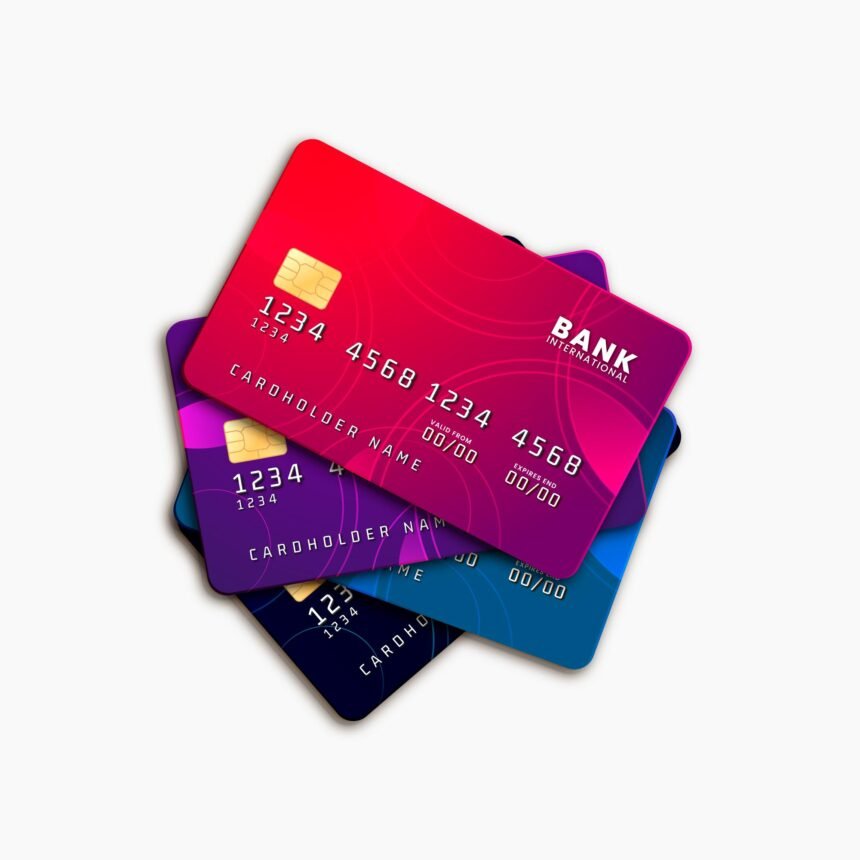RuPay, India’s indigenous payment network, has evolved from a government initiative to a robust alternative to international card networks. With growing acceptance domestically and unique benefits tailored for Indian consumers, RuPay credit cards have become an increasingly attractive option. After analyzing performance data across 7 major RuPay credit cards, we present the definitive ranking and guide to help you choose the best card for your needs.
- Understanding the RuPay Advantage
- Complete Rankings: RuPay Credit Cards Performance Analysis
- 1. Jupiter Edge+ 🏆 WINNER
- 2. Airtel Axis Bank RuPay Credit Card: RUNNER-UP
- 3. Scapia Travel @4% 🥉 SOLID THIRD
- 4. Tata Neu Plus HDFC Bank (Tied)
- 4. Kiwi Neon – Scan & Pay @2% (Tied)
- 6. UniCards GoldX – Digital Gold Rewards (Tied)
- 6. Axis Bank SuperMoney (Tied)
- Detailed Spending Scenario Analysis
- RuPay vs International Networks: The India Advantage
- Making the Right Choice: Decision Framework
- Choose Jupiter Edge+ If You:
- Choose Airtel Axis If You:
- Choose Scapia Travel If You:
- Choose Tata Neu Plus If You:
- The Verdict: RuPay’s Rising Star
Understanding the RuPay Advantage
Before diving into specific cards, it’s important to understand why RuPay matters:
Key Benefits of RuPay Credit Cards:
- Lower Processing Costs: Banks can offer better rewards due to reduced network fees
- Government Integration: Seamless integration with government services and payments
- Digital India Focus: Enhanced support for UPI, digital payments, and fintech integration
- Domestic Priority: Faster dispute resolution and customer service within India
- Future-Ready: First-mover advantage in India’s evolving digital payment landscape
Complete Rankings: RuPay Credit Cards Performance Analysis
| Monthly Spend (₹) | Jupiter Edge+ | Scapia Travel @4% | Airtel Axis Bank | UniCards GoldX –Digital Gold Rewards* | Axis Bank SuperMoney | Tata Neu Plus HDFC Bank | Kiwi Neon – Scan & Pay @2% |
| ₹0.00 | ₹0.00 | ₹0.00 | ₹0.00 | ₹0.00 | ₹0.00 | ₹0.00 | ₹0.00 |
| ₹10,000.00 | ₹1,000.00 | ₹400.00 | ₹1,015.00 | ₹100.00 | ₹100.00 | ₹200.00 | ₹200.00 |
| ₹15,000.00 | ₹1,500.00 | ₹600.00 | ₹1,065.00 | ₹150.00 | ₹150.00 | ₹300.00 | ₹300.00 |
| ₹20,000.00 | ₹1,750.00 | ₹800.00 | ₹1,115.00 | ₹200.00 | ₹200.00 | ₹400.00 | ₹400.00 |
| ₹25,000.00 | ₹2,000.00 | ₹1,000.00 | ₹1,165.00 | ₹250.00 | ₹250.00 | ₹500.00 | ₹500.00 |
| ₹30,000.00 | ₹2,250.00 | ₹1,200.00 | ₹1,215.00 | ₹300.00 | ₹300.00 | ₹600.00 | ₹600.00 |
| ₹35,000.00 | ₹2,500.00 | ₹1,400.00 | ₹1,265.00 | ₹350.00 | ₹350.00 | ₹700.00 | ₹700.00 |
| ₹40,000.00 | ₹2,550.00 | ₹1,600.00 | ₹1,315.00 | ₹400.00 | ₹400.00 | ₹800.00 | ₹800.00 |
| ₹45,000.00 | ₹2,600.00 | ₹1,800.00 | ₹1,365.00 | ₹450.00 | ₹450.00 | ₹900.00 | ₹900.00 |
| ₹50,000.00 | ₹2,650.00 | ₹2,000.00 | ₹1,415.00 | ₹500.00 | ₹500.00 | ₹1,000.00 | ₹1,000.00 |
Based on comprehensive reward analysis across spending levels from ₹10,000 to ₹50,000 monthly, here are the top RuPay credit cards:
1. Jupiter Edge+ 🏆 WINNER
Why It Leads: Jupiter Edge+ doesn’t just win—it dominates the RuPay landscape with exceptional reward rates that put international premium cards to shame.
Performance Highlights:
- ₹15,000 spend: ₹1,500 rewards (10% effective rate)
- ₹25,000 spend: ₹2,000 rewards (8% effective rate)
- ₹35,000 spend: ₹2,500 rewards (7.1% effective rate)
Strengths:
- Unmatched reward rates across most spending brackets
- Digital-first banking experience
- No complex category restrictions
- Front-loaded benefits from first purchase
Considerations:
- Reward growth plateaus after ₹40,000 monthly spend
- Newer brand compared to traditional banks
- Limited physical branch network
Best For: Anyone spending ₹15,000-40,000 monthly who wants maximum rewards without complexity can apply for rupay credit card online
2. Airtel Axis Bank RuPay Credit Card: RUNNER-UP
The Surprise Performer: This telecom-focused card delivers exceptional value, especially for lower spending levels. Then it fades out due to multiple caps on rewards and higher monthly spends.
Performance Highlights:
- ₹10,000 spend: ₹1,015 rewards (10.15% rate – beats Jupiter Edge+!)
- ₹20,000 spend: ₹1,115 rewards (5.6% effective rate)
- ₹30,000 spend: ₹1,215 rewards (4.1% effective rate)
Unique Value Proposition:
- Highest rewards at ₹10,000 spending level
- Integrated telecom bill management
- Strong mobile app ecosystem
- Competitive rates for moderate spenders
Ideal Users:
- Airtel service subscribers
- Spending ₹10,000-20,000 monthly
- Users wanting telecom-finance integration
- Those seeking established brand reliability
3. Scapia Travel @4% 🥉 SOLID THIRD
The Consistent Performer: True to its name, this card delivers steady 4% returns with travel-focused benefits.
Performance Highlights:
- Consistent ₹400 per ₹10,000 spent (4% flat rate)
- ₹25,000 spend: ₹1,000 rewards
- ₹50,000 spend: ₹2,000 rewards
Strengths:
- Predictable, linear reward structure
- Travel-optimized benefits and partnerships
- No reward caps or complex tiers
- Transparent earning mechanism
Best For:
- Travel enthusiasts
- Users wanting predictable returns
- Those who prefer simple reward structures
- Moderate to high spenders (₹20,000+)
4. Tata Neu Plus HDFC Bank (Tied)
The Ecosystem Player: Solid 2% returns with Tata ecosystem integration.
Performance Profile:
- Flat 2% return structure (₹200 per ₹10,000)
- ₹30,000 spend: ₹600 rewards
- Integration with Tata digital services
Value Proposition:
- HDFC Bank’s established infrastructure
- Tata ecosystem benefits beyond pure cashback
- Reliable, straightforward earning
- Good customer service network
4. Kiwi Neon – Scan & Pay @2% (Tied)
The Digital Native: Focuses on scan-and-pay transactions with consistent 2% returns.
Key Features:
- 2% rewards on digital transactions
- Modern, app-first experience
- QR code and digital payment optimization
- Same performance as Tata Neu Plus
Target Audience:
- Digital payment enthusiasts
- Users comfortable with fintech platforms
- Those seeking modern banking experiences
6. UniCards GoldX – Digital Gold Rewards (Tied)
The Gold Investment Card: Basic rewards with unique gold investment angle.
Performance:
- 1% effective return (₹100 per ₹10,000)
- Rewards in digital gold format
- Investment-focused value proposition
6. Axis Bank SuperMoney (Tied)
The Entry-Level Option: Basic rewards from established banking brand.
Profile:
- 1% return structure
- Traditional bank backing
- Simple, no-frills approach
- Wide acceptance and service network
Detailed Spending Scenario Analysis
The ₹20,000 Monthly Spender
This represents a typical middle-class Indian household’s monthly expenses:
Annual Reward Comparison:
- Jupiter Edge+: ₹21,000 annually (₹1,750 × 12)
- Airtel Axis: ₹13,380 annually (₹1,115 × 12)
- Scapia Travel: ₹9,600 annually (₹800 × 12)
- Tata Neu Plus/Kiwi: ₹4,800 annually (₹400 × 12)
Jupiter Edge+ delivers ₹7,620-16,200 more annually than competitors—enough to cover a domestic vacation or significant household purchases.
The ₹35,000 Monthly Spender
For higher-income households or small business owners:
Annual Impact:
- Jupiter Edge+: ₹30,000 annually
- Airtel Axis: ₹15,180 annually
- Scapia Travel: ₹16,800 annually
The gap widens further, with Jupiter Edge+ providing ₹13,200-14,820 additional annual value.
RuPay vs International Networks: The India Advantage
Why Choose RuPay in 2025?
1. Government Support & Integration
- Priority in government payment systems
- Enhanced UPI integration
- Support for Digital India initiatives
- Faster regulatory approvals for new features
2. Lower Costs, Better Rewards
- Reduced processing fees enable better reward rates
- Banks can afford higher cashback percentages
- More sustainable reward structures
3. India-First Innovation
- Features designed for Indian payment behaviors
- Better integration with local fintech ecosystem
- Optimized for domestic transaction patterns
4. Future Growth Potential
- Expanding international acceptance
- Strong growth in digital payment adoption
- Government backing ensures long-term viability
Making the Right Choice: Decision Framework
Choose Jupiter Edge+ If You:
- Want maximum rewards across all spending
- Spend ₹15,000-40,000 monthly
- Prefer digital-first banking
- Value simplicity over complex benefits
- Don’t mind newer brand vs. established banks
Choose Airtel Axis If You:
- Are an Airtel subscriber
- Spend ₹10,000-20,000 monthly
- Want integrated telecom services
- Prefer established banking relationships
- Value the highest rewards at lower spending levels
Choose Scapia Travel If You:
- Travel frequently for business or leisure
- Want predictable, linear rewards
- Spend ₹20,000+ monthly consistently
- Prefer transparency over maximum returns
- Value travel-related benefits and partnerships
Choose Tata Neu Plus If You:
- Are invested in Tata ecosystem services
- Want HDFC Bank’s service quality
- Prefer moderate, steady returns
- Value ecosystem integration over pure cashback
The Verdict: RuPay’s Rising Star
The RuPay credit card landscape showcases the network’s maturation and growing sophistication. Jupiter Edge+ emerges as the clear winner, delivering rewards that rival or exceed premium international cards while maintaining the cost advantages of India’s domestic network.
What’s particularly impressive is how RuPay cards are pushing the boundaries of reward rates, Jupiter Edge+’s 10% effective returns at certain spending levels would be considered exceptional even among premium international cards with high annual fees.
The data reveals a healthy competitive landscape with options for every spending profile, from Airtel Axis’s strength at lower spending levels to Scapia’s consistent travel-focused value.
Bottom Line: RuPay credit cards have evolved beyond their humble beginnings to offer genuinely competitive—and in many cases superior—value compared to international alternatives. For Indian consumers, choosing RuPay isn’t just about supporting domestic innovation; it’s about accessing some of the best reward rates available in the market today.
As the digital payment ecosystem continues evolving, RuPay’s integration advantages and cost efficiencies position these cards for even greater success. The future of Indian credit cards isn’t just competitive with international options—it’s leading the way.





